Did your Whirlpool refrigerator suddenly stop making ice, but it still makes cold water, and you want to know what you can do to fix the issue? You’ve come to the right place, for we have researched this question, and we have the answer for you.
Check the ice maker switch and make sure that it is on. Here are additional things that you need to check on your Whirlpool refrigerator so that the ice maker will work as expected:
- Freezer temperature
- The water filter is blocked
- The water inlet tube is blocked
- Insufficient water pressure
- Faulty door switch
- Stuck bail arm
- Ice compacting
- Infrared beam blockage
- Ejector finger jamming
- Warm groundwater
Let’s talk more about each of these issues in more detail in the succeeding sections. That is a long list, but we will go through each one in detail below.
Read on!
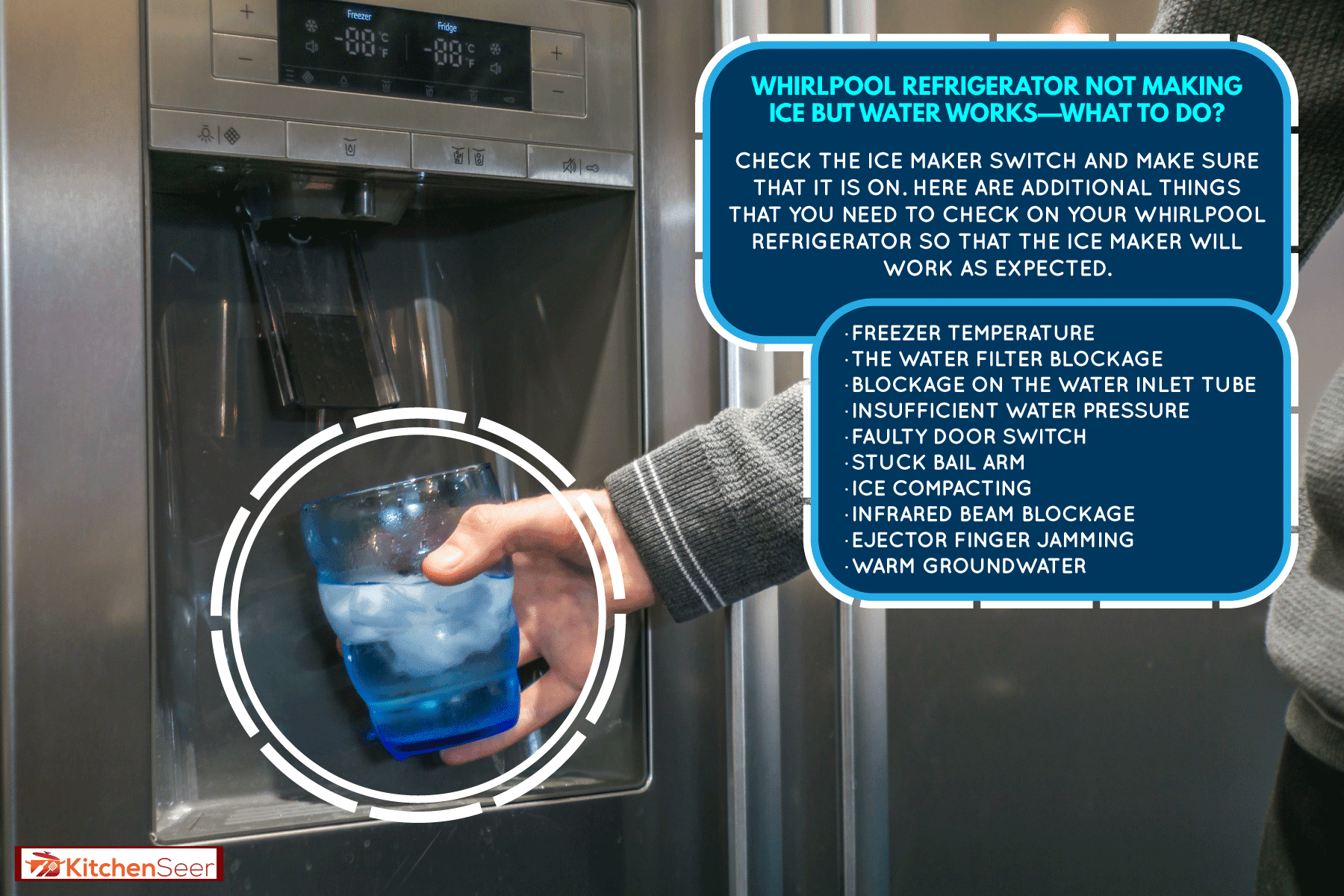
What is a refrigerator ice maker?
The traditional way of making ice in your refrigerator is using ice trays. You fill ice trays with water, then place them inside your freezer. You wait until the water in the ice tray freezes, transfer the ice to another container, then refill the ice tray with water.
This manual re-fill and freeze cycle repeats itself to gather larger amounts of ice.
Modern refrigerators simplify this process by automating the production of ice. You connect your refrigerator to a water line that provides a steady supply of clean water for your ice maker. The ice maker is responsible for moving the ice to a container and refilling the tray with water to repeat the cycle.
However, with many moving parts, you also get multiple possible failure points. With interdependent parts, the failure of one part will lead to the failure of the whole system.
Can freezer temperature affect the ice maker?
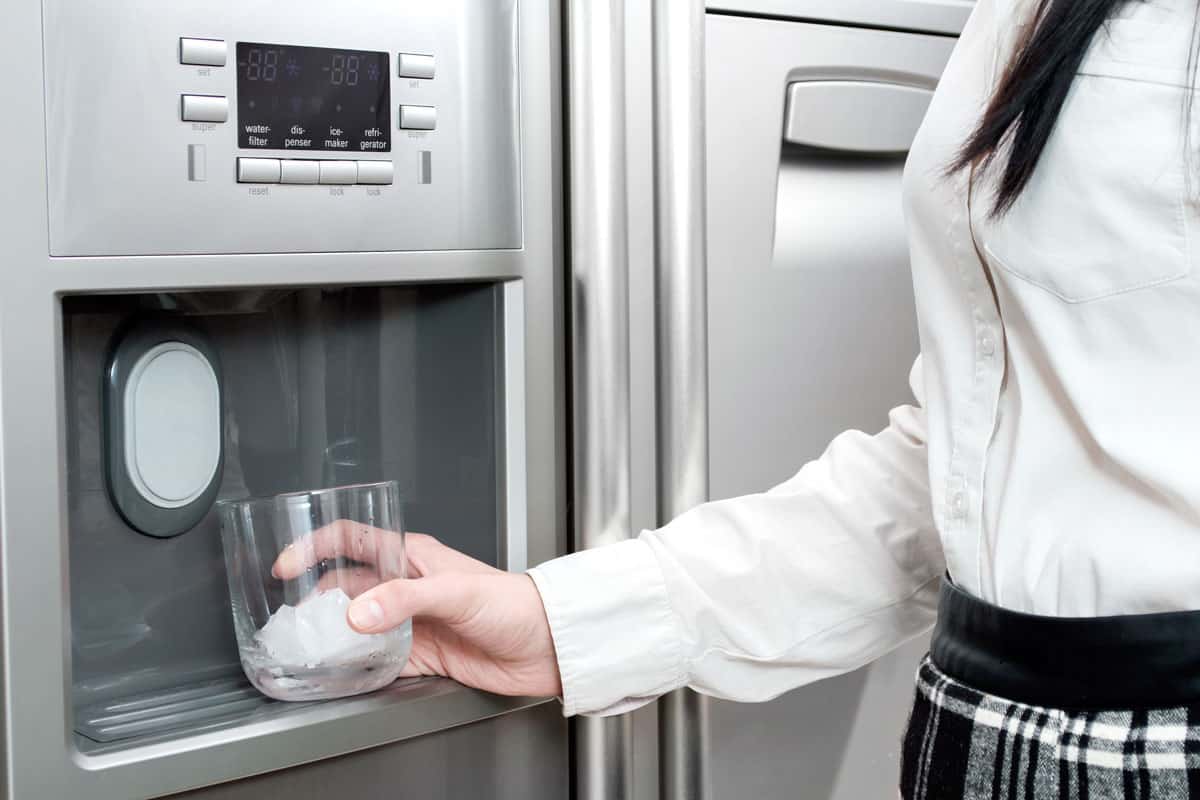
Water needs to reach a specific temperature before it freezes. The specific temperature can change depending on the water that you use. Hard water, for example, has a different freezing temperature than regular tap water.
Thus, the ice maker system in your refrigerator will only start to work if your refrigerator and freezer are set to a minimum temperature. This prevents accumulating too much water in the ice maker area. Some ice maker systems have a built-in thermostat that monitors the freezer temperature, activating it only once the freezer is at a minimum temperature.
If your ice maker stops working, check the freezer temperature and refrigerator. If either one is too low, your ice maker will automatically stop producing ice.
Whirlpool suggests a minimum freezer temperature of 0 degrees Fahrenheit. The refrigerator temperature should be within 33 degrees to 40 degrees Fahrenheit.
Adjust the temperature of your freezer and refrigerator to within these ranges, and your ice maker should start to produce ice once more.
Does the water filter need to be replaced?
You should replace the water filter of your Whirlpool refrigerator every six months. Replace it more often if you have hard water in your area.
The water filter traps contaminants in the water. This includes solid contaminants that will eventually clog the filter as the contaminants accumulate. This weakens the water flow, which leads to low ice production.
The ice production will stop completely once the clogging on the filter gets worse.
Replace the water filter to restore the correct water flow, and this will get your ice maker working. Look for water filters that have the Whirlpool brand logo or one with the "EveryDrop" trademark.
Try this EveryDrop Filter 1 from Amazon.
Can the water inlet tube to the ice maker freeze?
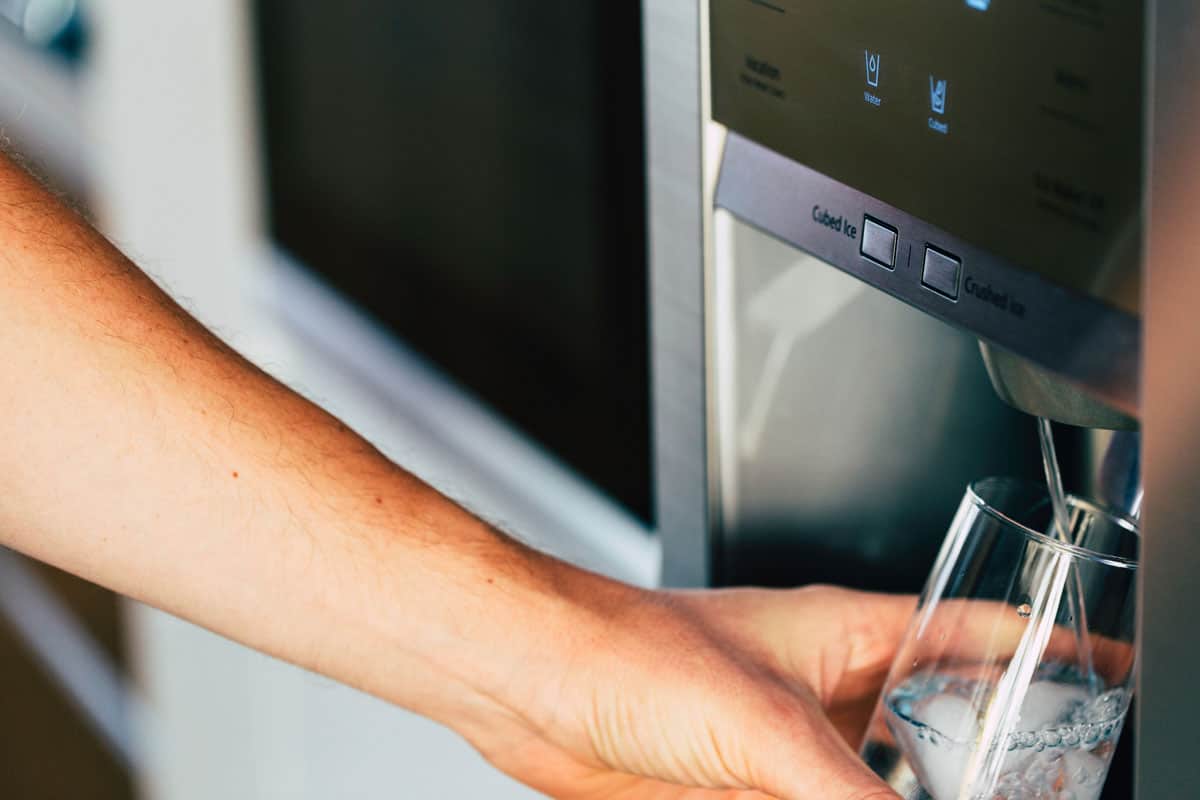
There is more than one reason why you might have a weak water flow. Another possible reason is that you have a blocked water inlet tube. The most common blockage in the water inlet tube is ice.
If your freezer experiences too much frost, the water inlet tube can slowly accumulate frost. This can eventually lead to a frozen water inlet tube that will weaken the water flow and completely block it in time.
To fix this issue, follow the simple steps below.
- Locate the water inlet tube. It is usually located at the top of the ice maker near the back.
- Turn off the refrigerator and unplug it.
- Place clean rags under the water inlet tube. This will catch the water that will start to drip once the ice melts.
- Use a steamer or a hair dryer and direct the warm air towards the water inlet tube. Wait until all the ice melts.
- Wait for the water inlet tube to cool down before you turn your Whirlpool back on after melting all the ice. Your refrigerator will take around 24 hours before the temperature normalizes and start producing ice once more.
Does the ice maker need water pressure?
Whirlpool suggests a minimum water pressure of 30 psi (pounds per square inch) for the ice maker to work. Use a water pressure gauge to check if you have the minimum water pressure.
Check the water line that goes to the back of your refrigerator. Check for crimps along its length. If it is a transparent tube, check for blockage inside.
Minerals from hard water can accumulate inside the tube, and this can affect the flow of water to your refrigerator. Replace the tube if necessary. Make sure the tube is not caught between anything that could crimp it.
Reverse-Osmosis And Water Pressure
If you have a reverse-osmosis system that cleans the water before it goes to your refrigerator, check the water pressure after it leaves the system. A reverse osmosis system can reduce water pressure.
Here are some tips to maintain water pressure coming from the reverse-osmosis system:
- Regularly check the sediment filter of the reverse-osmosis system and replace it as needed.
- Refill the storage tank after heavy use.
- Remove the water filter of the refrigerator.
How does a faulty door switch affect the ice maker?
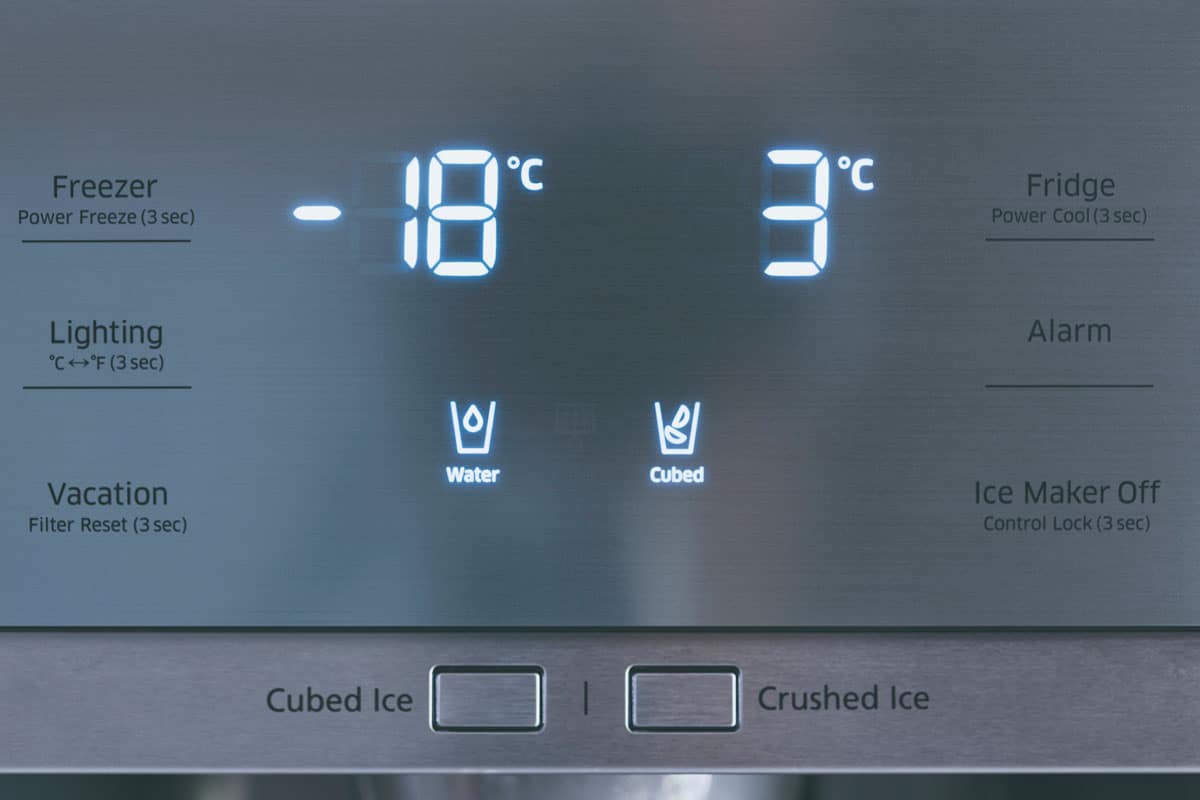
Closing the door of your refrigerator presses a switch that sends a signal to your refrigerator to perform some important functions. One of those functions is to turn off all the lights inside. The other function is to turn on the infrared.
The infrared monitors the ice level and turns off the ice maker once it detects that the ice box is full. However, if the door switch doesn’t function correctly, the infrared will default to thinking that the ice box is full and stop producing ice.
Make an appointment with a Whirlpool technician to verify the issue and fix the issue for you.
Infrared Beam Blocked
A related problem is when dirt or ice blocks the infrared beam. Your refrigerator will interpret the blockage that the ice box is full and stop ice production.
Clean the infrared projector to fix this issue. If the problem persists after cleaning the infrared, then it could be a faulty infrared. Have a Whirlpool technician check the infrared and replace it if necessary.
How does the bail arm work?
The bail arm works the same way as the infrared. It is a large metal lever that moves up and down over the ice box. Some Whirlpool models use a bail arm, while some use an infrared to monitor the ice level inside the ice box.
Thus, if the bail arm stops moving, the refrigerator might think that the ice box is full and stop the production of ice.
Check the bail arm for any blockage that prevents it from moving. Sometimes ice can get the bail arm stuck once the ice box is full. Once stuck, the bail arm will not move back down after the ice box is empty.
What is ice compaction?
Ice compaction in your ice maker is the same as snow compaction. Snow is fluffy and loose after it falls. However, a day or two later, undisturbed snow at the bottom of the pile will solidify into ice.
A similar phenomenon happens to the ice inside your refrigerator. Ice compaction causes the ice inside the ice box to bind together and turn into a single solid mass. The solid mass of ice prevents ice cubes from getting out of the ice box.
This phenomenon only happens when you seldom use the ice that your refrigerator produces.
To fix this issue, remove the ice mass from the ice box.
You can prevent this issue from happening again in the future by turning off the ice maker if you don’t think you will need ice in the next few days.
What is the ice maker's ejector finger?
The ejector finger pushes the ice out of the ice tray and into the ice box. If the ejector finger gets jammed, it will not be able to push the ice out. This will stop the ice production.
The usual cause of jammed ejector fingers is ice buildup. Defrosting your Whirlpool will melt the ice that prevents the movement of the ejector fingers.
What is the effect of warm water on ice production?
Warm water during warm months can create a situation where the freezer temperature is not enough. Adjust the freezer temperature to 2 degrees lower during warm months to prevent warm water from stopping ice production.
Conclusion
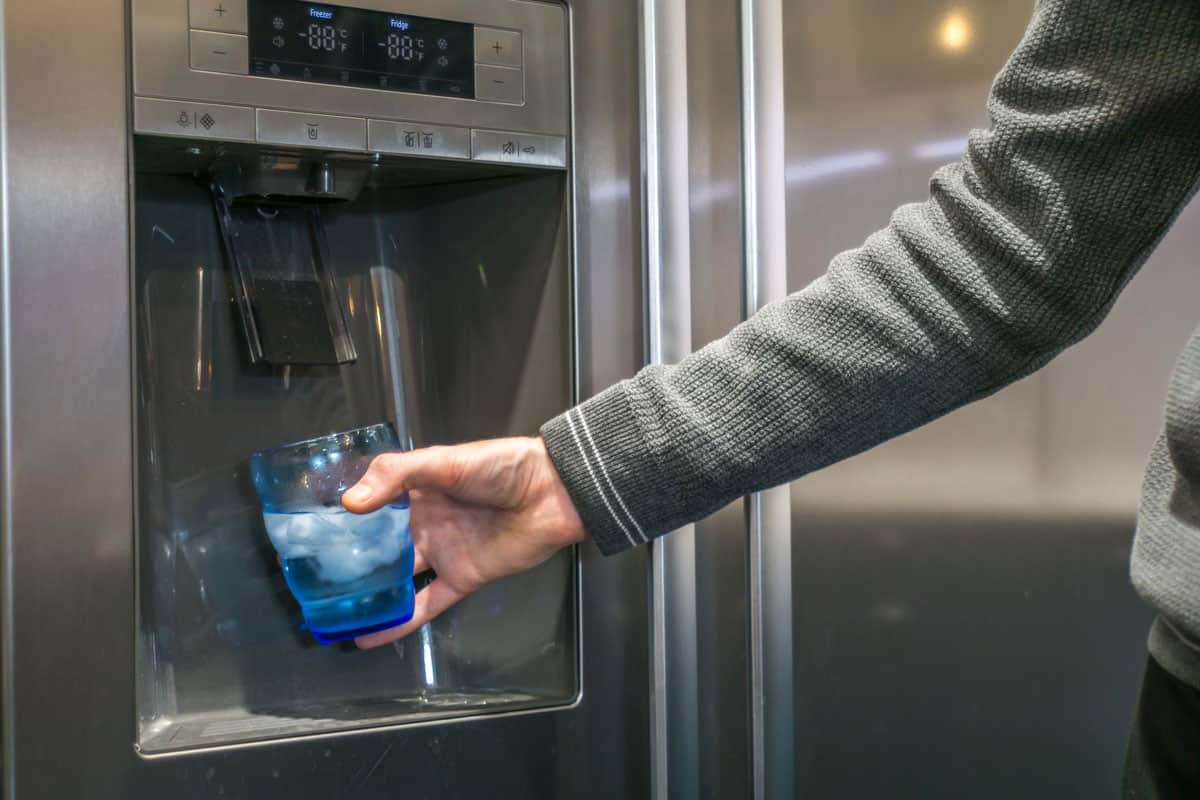
Different issues could stop the ice production in your Whirlpool refrigerator. Check each one until you fix the problem. Keeping a close eye on the ice maker's function can ensure a longlasting device.
If you enjoyed reading this article, you might find the articles below equally enjoyable to read:

